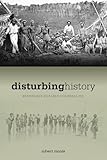Disturbing History : Resistance in Early Colonial Fiji / Robert Nicole.
Material type: TextPublisher: Honolulu : University of Hawaii Press, [2010]Copyright date: ©2010Description: 1 online resource (328 p.) : 22 illusContent type:
TextPublisher: Honolulu : University of Hawaii Press, [2010]Copyright date: ©2010Description: 1 online resource (328 p.) : 22 illusContent type: - 9780824832919
- 9780824860981
- 996.11
- DU600 ǂb N534 2011eb
- online - DeGruyter
- Issued also in print.
| Item type | Current library | Call number | URL | Status | Notes | Barcode | |
|---|---|---|---|---|---|---|---|
 eBook
eBook
|
Biblioteca "Angelicum" Pont. Univ. S.Tommaso d'Aquino Nuvola online | online - DeGruyter (Browse shelf(Opens below)) | Online access | Not for loan (Accesso limitato) | Accesso per gli utenti autorizzati / Access for authorized users | (dgr)9780824860981 |
Browsing Biblioteca "Angelicum" Pont. Univ. S.Tommaso d'Aquino shelves, Shelving location: Nuvola online Close shelf browser (Hides shelf browser)

|

|

|

|

|

|

|
||
| online - DeGruyter From Okinawa to the Americas : Hana Yamagawa and Her Reminiscences of a Century / | online - DeGruyter Mediating Across Difference : Oceanic and Asian Approaches to Conflict Resolution / | online - DeGruyter Destiny's Landfall : A History of Guam, Revised Edition / | online - DeGruyter Disturbing History : Resistance in Early Colonial Fiji / | online - DeGruyter Chinese Architecture and the Beaux-Arts / | online - DeGruyter Since Meiji : Perspectives on the Japanese Visual Arts, 1868-2000 / | online - DeGruyter Rectifying God’s Name : Liu Zhi’s Confucian Translation of Monotheism and Islamic Law / |
Frontmatter -- Contents -- Acknowledgements -- Introduction -- Chapter One. The Colo War of 1876 -- Chapter Two. Navosavakadua and the Tuka Movement -- Chapter Three. The Movement for Federation and the Viti Kabani -- Chapter Four. Organised Plantation Protest -- Chapter Five. Everyday Resistance in the Villages -- Chapter Six. Everyday Resistance on the Plantations -- Chapter Seven. Women's Resistance -- Conclusion -- Notes -- Glossary -- Bibliography -- Index -- About The Author
restricted access online access with authorization star
http://purl.org/coar/access_right/c_16ec
Disturbing History focuses on Fiji's people and their agency in responding to and engaging the multifarious forms of authority and power that were manifest in the colony from 1874 to 1914. By concentrating on the lives of ordinary Fijians, the book presents alternate ways of reconstructing the island's past. Couched in the traditions of social, subaltern, and people's histories, the study is an excavation of a large mass of material that tells the often moving stories of lives that have largely been overlooked by historians. These challenge conventional historical accounts that tend to celebrate the nation, represent Fiji's colonial experience as ordered and peaceful, or British tutelage as benevolent. In its contribution to postcolonial theory, Disturbing History reveals resistance as a constant but partial and untidy mix of other constituents such as collaboration, consent, appropriation, and opportunism, which together form the colonial landscape. In turn, colonialism in Fiji is shown as a force shaped in struggle, fractured and often fragile, with a presence and application in the daily lives of people that was often chaotic, imperfect, and susceptible to subversion.The book divides the period of study into two broad categories: organized resistance and everyday forms of resistance. The first examines the Colo War (1876), the Tuka Movement (1878-1891), the Seaqaqa War (1894), the Movement for Federation with New Zealand (1901-1903), the Viti Kabani Movement (1913-1917), and the various organized labor protests. The second half of the book addresses resistance manifested in the villages and plantations, including tax and land boycotts, violence and retributive justice, avoidance protest, petitioning, and women's resistance. In their entirety these forms reveal a complex web of relationships between powerful and subordinate groups and among subordinate groups themselves. The author concludes that resistance cannot be framed as a totality but as a multilayered and multidimensional reality. In the wake of Fiji's present volatile climate, this book will aid readers in understanding the continuities and disjunctures in Fiji's interethnic and intraethnic relations.
Issued also in print.
Mode of access: Internet via World Wide Web.
In English.
Description based on online resource; title from PDF title page (publisher's Web site, viewed 02. Mrz 2022)


